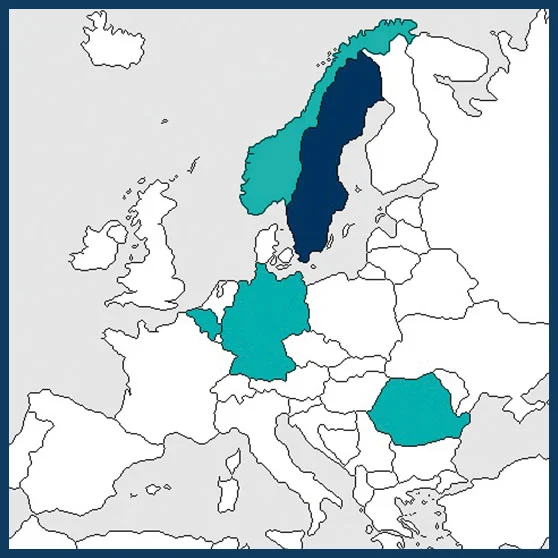12-2016 to 01-2020
€ 1,569,041
Dr. Brendan McKie
Brendan.mckie@slu.se
Swedish University of Agricultural Sciences, Uppsala, SWEDEN (Coordinator)
Ghent University, Gent, BELGIUM
Helmholtz-Centre for Environmental Research, Leipzig, GERMANY
Norwegian Institute for Water Research, Oslo, NORWAY
University of Bucharest, Bucharest, ROMANIA

Stream-riparian networks are key components of green and blue infrastructure (GBI) that underpin landscape integrity by transporting nutrients, regulating floods, buffering human impacts and supplying fresh water. Unfortunately, stream-riparian networks are also subject to multiple human pressures (e.g. from agriculture and hydropower) that affect longitudinal and lateral connectivity, driving habitat and diversity losses, threatening ecosystem services, and causing stakeholder conflicts. There is thus a pressing need to understand the importance of connectivity within these networks, in particular its effects on biodiversity and ecosystem functioning and services, and to apply this understanding in managing stream- riparian GBI for both natural values and societal needs.
CROSSLINK aims to:
1. evaluate how the extent, spatial arrangement and connectivity of riparian-stream GBI affects biodiversity, and ecosystem functioning, services, and resilience in forested, urban and rural settings, and
2.to produce an optimization framework capable of balancing multiple values, uses and needs, including biodiversity, water provisioning and purification, exploitation for hydropower, and aesthetic values, in riparian-stream networks.
The CROSSLINK project will analyse existing data and conduct extensive novel and spatially explicit field studies. A GBI asset portfolio will be constructed, comprising biodiversity, ecosystem processes and services, flood protection and resilience properties. Relationships between the portfolio elements, spatial connectivity and human impacts are analysed and incorporated into an optimisation platform, which identifies spatial configurations and strategies for GBI that minimise management trade-offs and maximise multi-functionality.
Stakeholders assist the CROSSLINK project in identifying pressures and priori- ties, areas of conflict, and possible management actions. CROSSLINK’s findings, including optimal solutions for GBI planning, will be translated into a learning- based environment, allowing stakeholder analysis of tradeoffs/ synergies between multiple values/goals in GBI management.